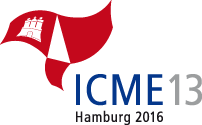Hamburg – the Metropolis on the Water
What would Hamburg be without water? Without its 2500 bridges? Water is the elixir of life for the pulsating world metropolis, the river Elbe its vital artery, the port its heart and the motor powering its growth. Nowhere do you notice the city’s special character more clearly than at the port, whether in the Speicherstadt, the historic warehouse buildings in the old harbour, or at the Altenwerder, site of the world’s most advanced container terminal.
Nowhere else does the openness to the world of the North German metropolis reveal itself more graphically than at the port. The Port of Hamburg is the gateway to Europe, to overseas and East Asia. It was the port that first made Hamburg an international trading metropolis, the most important trading hub in Northeastern Europe and the European centre for trade with China. Most of Germany’s Top 500 companies are represented here. Here they find not only an attractive environment for their business, but also security and a top quality of life.
Not many cities can offer such abundant fresh air, water and luxuriant greenery in the middle of the city. The trees lining the streets and squares, the broad acres of such parks as the Stadtpark, Volkspark, Jenischpark and Planten un Blomen, and the green spaces around the lake Außenalster right in the city’s centre – together they all form the city’s green lung. Nature returns to the big city along the watercourses between the Elbe river and the Alster river. Today Hamburg has more woods than 100 years ago. It is possible to live close to nature and in urban surroundings at the same time.
Here you can relax and reach North Sea and Baltic beaches within one to two hours. Here there’s a feeling of spaciousness and freedom almost everywhere. The spacious cityscape is notable for low building density with just a few striking high-rises. Elegant villa districts alternate with solid middle-class residential areas and trendy quarters of the inner city. Shopping here is also notable for its diversity. Hamburg’s bright shopping malls, long-established department stores and the showrooms of big-name designers encourage shopping. In the trendy quarters, young fashion designers present collections that are original and creative.
Hamburg with its 1.8 million inhabitants from 183 nations is the second largest city in Germany, and is seen as a bastion of culture and metropolis of learning. Fashion designers, media specialists, artists and musicians – all of them also feel the pull of Hamburg. The city’s vibrant landscape of both high culture and sub-culture offers a stimulating environment and very fine opportunities for creative spirits of all shades in the world of culture. High-calibre theatre and ballet, 60 museums, musicals of Broadway standard, a young and authentic club scene thriving in numerous clubs around the famous Reeperbahn – lives pulsate in the metropolis of the North day and night. The Reeperbahn, a red-light district long ago, has transformed itself into an attractive street of entertainment. Even if there are fewer public holidays in the Hanseatic City than in the South of Germany, there’s always a reason for celebrations in Hamburg. The Port Birthday, the Cherry Blossom Festival, the fair called Dom, Alster Pleasures ...
Get an impression here: http://english.hamburg.de/


